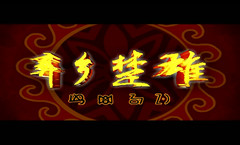National Intangible Cultural Heritage Jianchuan wood-carvings come to Beijing
( chinadaily.com.cn )
Updated: 2014-03-17
An exhibition of wood-carvings from Jianchuan county of the Dali Bai autonomous prefecture in the west of Yunnan province kicked off on March 7 at the China Central Academy of Fine Arts, Chinanews.com reported.
A total of over 100 wood-carving works of more than 30 categories were displayed in the exhibition, which is a joint effort by the China Central Academy of Fine Arts and Jianchuan county, which is known as “China’s Home for Wood-Carving.”
All the exhibits, including wood-carvings from the Ming (1366-1644) and Qing (1644-1911) dynasties, architecture wood-carvings, ornamental wood-carvings, practical wood-carvings and souvenirs, were collected in Jianchuan county. They were the embodiment of the exquisite and long-standing skills of Jianchuan wood-carving. A photo exhibition, live wood carving, academic symposium and special presentation will take place in tandem with the exhibition. The China Central Academy of Fine Arts – a member of the first batch of universities and colleges to assist the remote western Yunnan areas – organized the exhibition to implement the Education Ministry’s plan to accelerate education reform and development in western Yunnan province. Its assistance plan for these areas will last five years until 2017.
Jianchuan county is rich in the cultural treasures of the Bai ethnic group. Jianchuan wood-carving is exquisite and enjoys a long history. The wooden farm tools and building parts unearthed in Jianchuan date back 5,300 years and are the origins of Jianchuan wood-carvings.
During the Ming and Qing dynasties, Jianchuan wood-carving was popular in the now Sichuan and Guizhou. Jianchuan wood carvers were convened to Beijing for the construction of the Forbidden City. They were also sent to Southeast Asia for the construction of Buddhist buildings. Jianchuan wood-carvings thus integrated Buddhist features with Han culture and gradually shaped a style unique to Southwest China, according to the introduction of Wang Yuan, head of Jianchuan county.
Since Bai people do not have their own written language, the wood-carving skills are passed on through oral instructions. According to locals, the current skills of Jianchuan wood-carvings date to before the Ming and Qing dynasties. The skill has maintained its traditions while taking in new elements, especially thanks to the Internet and younger generations.
Jianchuan was recognized as “China’s Home of Wood-Carving Art” and “China’s Home of Folk Culture and Art” by the Culture Ministry in 1996 and 2008, respectively. In 2013, Jianchuan wood-carving was selected as one of the third batch of Intangible Cultural Heritages Protected at the National Level by the State Council.
Jianchuan wood-carvings, over the past 1,000 years, have formed more than 2,000 varieties in five categories: classical wood-carving furniture, ancient buildings, modern furniture, ornaments and decorations, and souvenirs. Jianchuan wood-carving products were sold to 127 countries and regions. The industry’s total output value hit 100 million yuan ($16.3 million) in 2013.
 |
|
The photo taken on Oct 11, 2013, shows Duan Sixing, an inheritor of Jianchuan wood-carving as a National Intangible Cultural Heritage, introducing his wood-carving work, which features a celebration dance in Yunnan province. [Photo by Qin Lang/Xinhua] |
 |
|
The photo taken on Oct 11, 2013, shows the tools utilized in Jianchuan wood-carving. [Photo by Qin Lang/Xinhua] |
Edited by Liu Yufen and Micheal Thai

